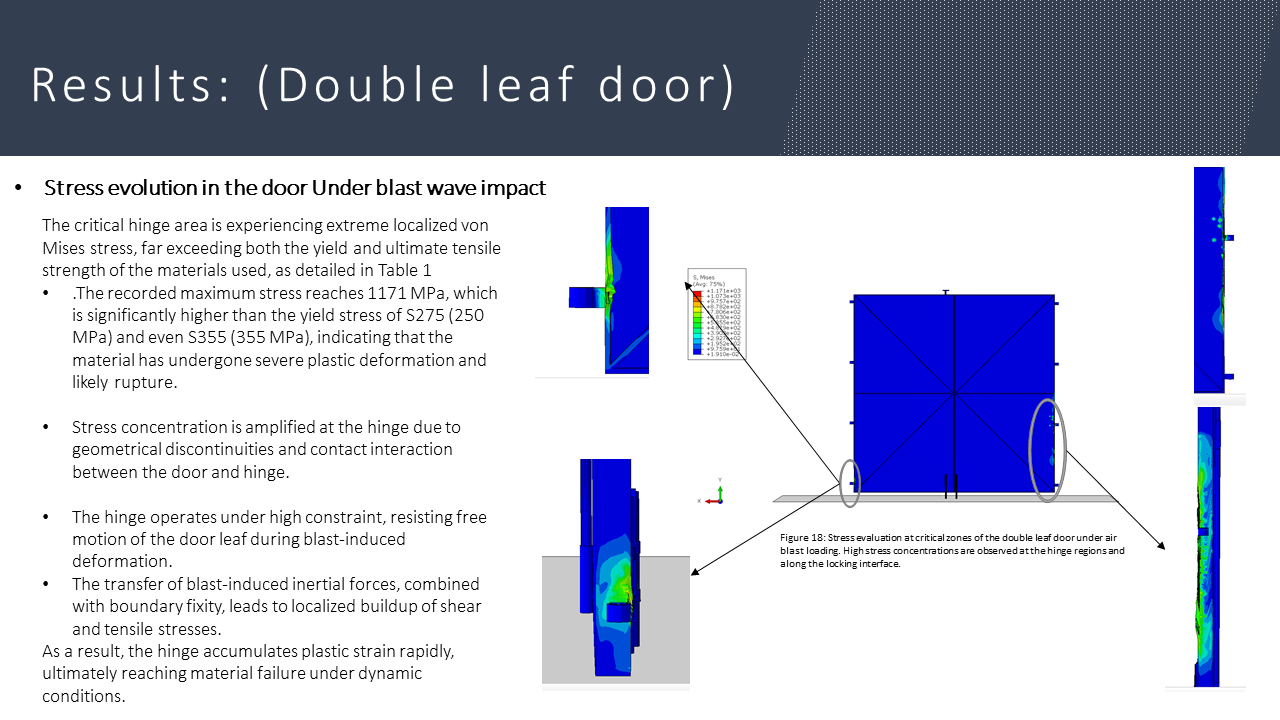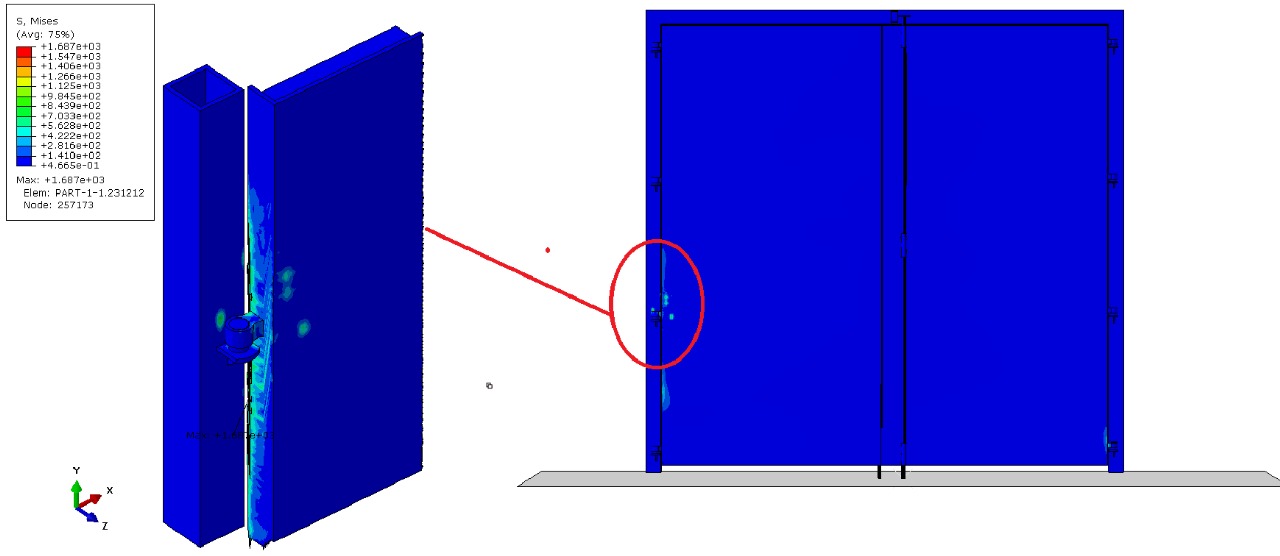Evaluation of Structural Behavior of Steel Doors and its component Subjected to Air Blast Loading
$ 300
Scenario:
A stage hall contains steel doors and cylinders filled with explosive material. In the event of an accidental explosion inside the hall as shown in Figure , it is critical to understand whether the doors can withstand the blast pressure and maintain their structural integrity.

Objective:
To assess the structural response and potential failure of single and double leaf steel doors under an internal explosion scenario using finite element simulation in Abaqus.
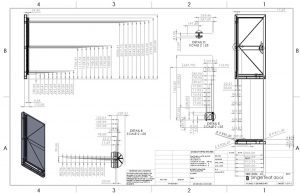
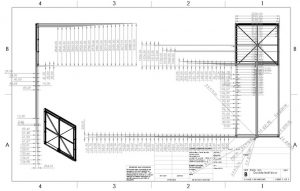
Why it matters:
- Ensures containment of hazardous zones
- Prevents secondary damage outside the hall
Informs safety design and door reinforcement strategies
Material Modelling:
Material: S275 Steel
To capture the realistic behavior of structural steel under high strain-rate loading such as explosions, the Johnson–Cook (J–C) plasticity and damage model was implemented in the simulation. This model is widely used for materials exposed to large strains, high strain rates, and elevated temperatures, making it ideal for blast and impact simulations. All structural components of the door ,including the frame, leaf, and reinforcements were modeled using S275 structural steel, while the hinges were assigned S355 steel, which offers higher strength and improved ductility.
The steel used in this study is S275, a commonly used structural grade. Its response is modeled using:
- Elastic behavior
- Johnson–Cook plasticity for permanent deformation
- Johnson–Cook damage for fracture prediction
- Plasticity model: Describes the material flow stress as a function of plastic strain, strain rate, and temperature.
- Damage model: Predicts the initiation and evolution of damage using five empirical parameters (D1–D5), related to strain, pressure, and temperature.
It’s particularly suitable for dynamic simulations like explosions due to its ability to handle rapid, nonlinear material response.
Results: (Single leaf door)
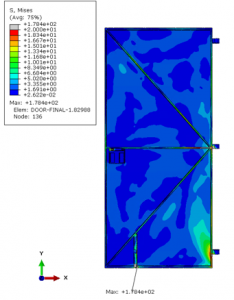
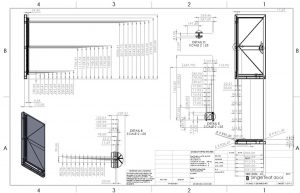
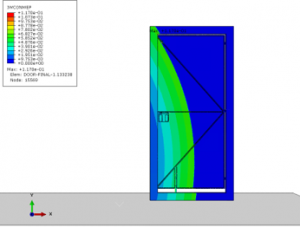
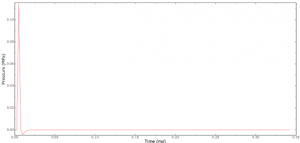
Figure shows the pressure wave distribution on the steel door due to an air blast, captured at a specific simulation time. The pressure values are visualized using a IWCONWEP-defined field, where the shock front is clearly propagating from left to right, impacting the door surface. Also Figure presents the time history of blast pressure at a representative node on the door surface. The pressure curve shows a sharp peak followed by a rapid decay, a typical signature of a positive phase blast wave. The peak pressure reaches approximately 0.11 MPa, indicating the instant of maximum impact immediately after the explosion. The pressure then drops and stabilizes, corresponding to the wave dissipation. Also below figure give insight on the critical stress evolution in the door component.
Results: (Double leaf door)
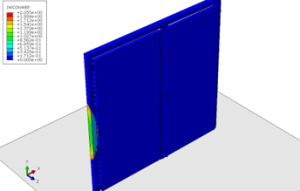

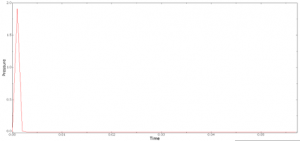
The initial blast wave in Figure, shows a peak incident pressure of 2.05 MPa, concentrated on the impact side of the door. This is where the shock wave first strikes, delivering the highest energy.The second image Figure 14, captures the moment the blast wave has begun to dissipate and propagate across the door surface, reducing in intensity as it spreads and reflects.The pressure-time graph Figure 15,reveals a sharp peak corresponding to the maximum blast loading, followed by a steep drop ,a typical response in blast dynamics. The total duration of the high-pressure phase is very short (~0.01 ms), emphasizing the impulsive nature of blast loading.
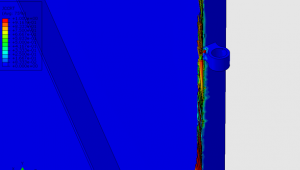
- The hinge zone located along the edge of the double leaf door experiences a critical concentration of stress and strain, as shown by the JCCRT values approaching 1.0 (full damage).
- The blast pressure of 2.05 MPa, focused at this region, causes the following failure mechanisms
- Shear and bending at the panel-hinge interface due to door flexure.
- Stress wave reflection at material boundaries (hinge–panel junction), amplifying local damage
- Mechanical constraint at the hinge preventing free deformation, converting dynamic load into localized plastic strain and eventual failure.
- The high damage variable (red zones in the contour) confirms that the hinge support material has exceeded its ductility limits, and is a potential point of structural failure or detachment under repeated or more intense blast loading.
Access to Original Files
Our packages include comprehensive design documentation, detailed analysis reports, and essential files, all readily available for download. This collection ensures that you have everything needed to replicate the project or adapt it to fit your specific needs.
Project Customization
If you’d like to improve or modify our featured project to better suit your requirements, we offer customization services. This includes adjusting design parameters, adding extra analyses, or creating variations tailored to your industry or application.
Tutoring & Consultation
Receive expert guidance on complex engineering concepts through comprehensive tutorials and live sessions, designed to help you understand and apply these subjects effectively. Our expert-led tutorials provide a clear, step-by-step guide to complex engineering concepts.
